The global culinary tourism market size accounted for USD 13.83 billion in 2024, grew to USD 16.58 billion in 2025 and is estimated to hit around USD 85.04 billion by 2034, registering a CAGR of 19.92% between 2024 and 2034. The Europe culinary tourism market size is calculated at USD 4.56 billion in 2024 and is expected to grow at a notable CAGR of 20.09% during the forecast year.
The global culinary tourism market size is calculated at USD 13.83 billion in 2024 and is predicted to reach around USD 85.04 billion by 2034, expanding at a healthy CAGR of 19.92% from 2024 to 2034. The increasing attraction towards travel and tourism activities and interest towards exploring the localized food and culture is driving the growth of the culinary tourism market.
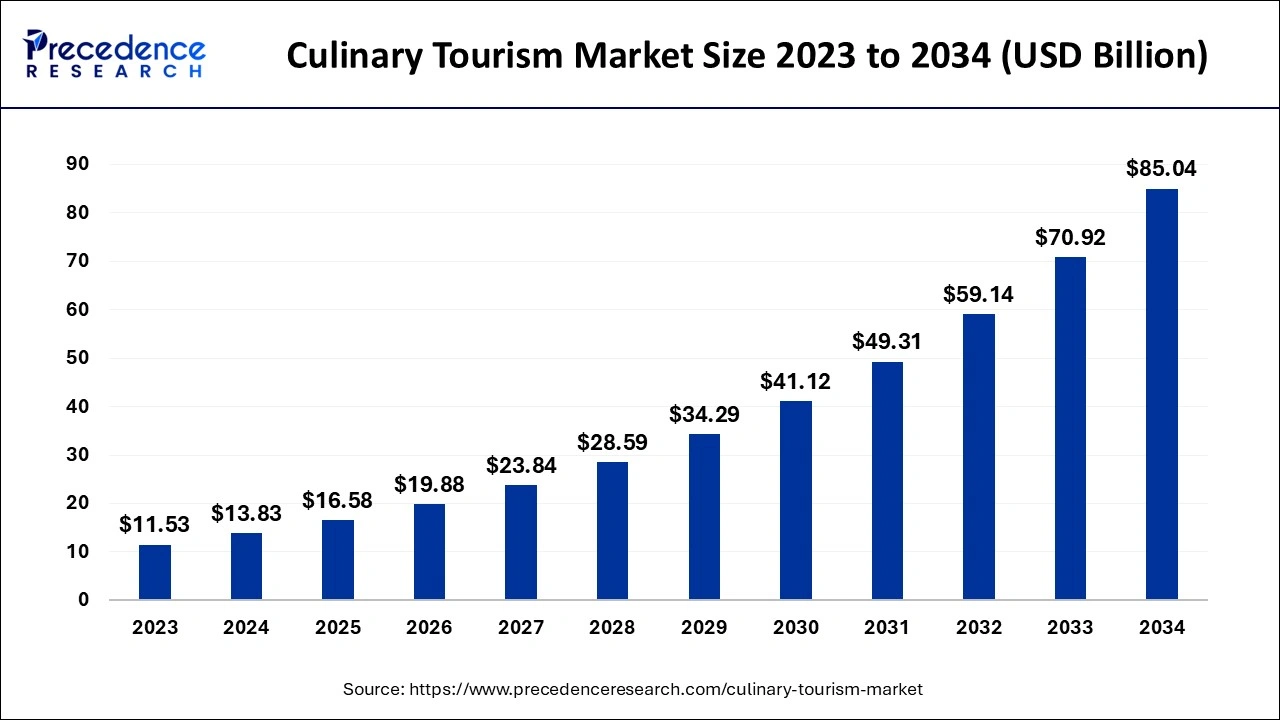
Artificial intelligence plays an important role in the culinary tourism market. It helps in enhancing the overall operations in the travel industry. AI algorithms help in detecting and analyzing the consumer behavior with their travel history, search recommendations, and other activities. AI could offer the personalized recommendation in terms of food and travel destination. AI is playing a huge role in continuous evaluation and transforming the landscape of the travel and culinary experience.
The Europe culinary tourism market size is exhibited at USD 4.56 billion in 2024 and is expected to be worth around USD 28.49 billion by 2034, growing at a CAGR of 20.09% from 2024 to 2034.
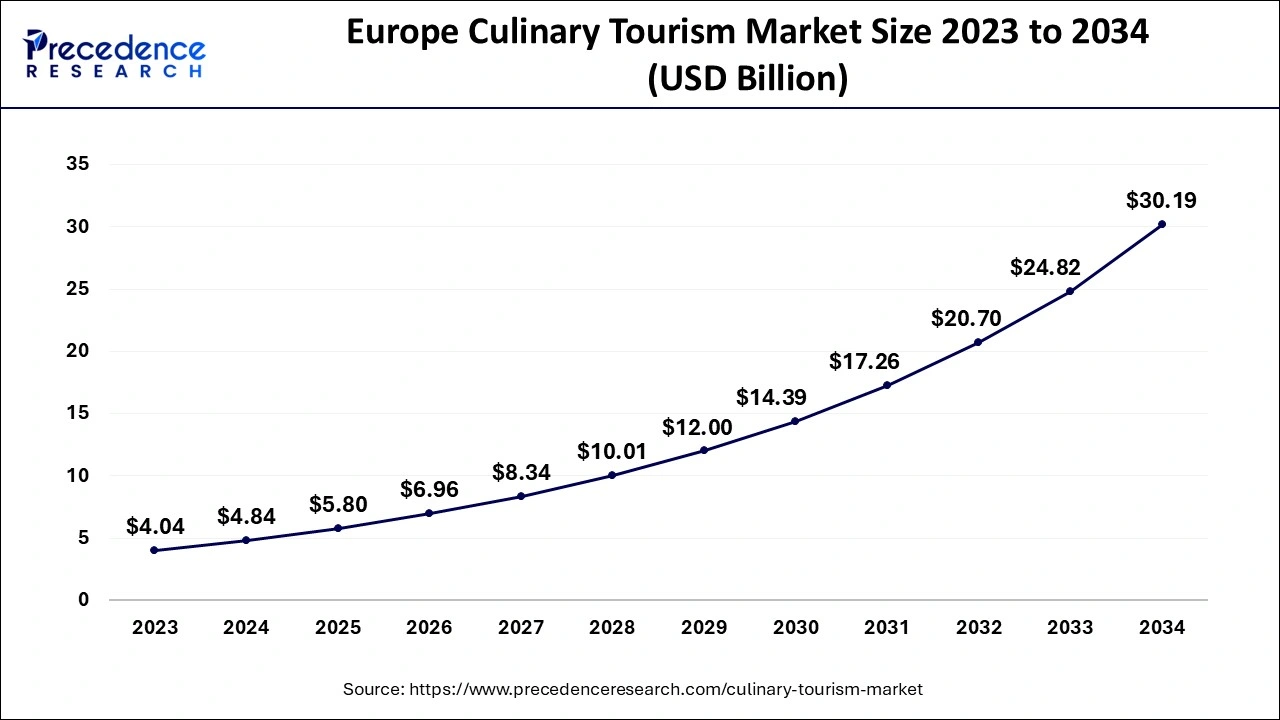
Europe dominated the culinary tourism market in 2023. Europe has the highest number of tourists around the world, which has a great impact on the expansion of the culinary tourism industry. The country has a wide range of diversity and cultural heritage with the presence of a number of local food and culinary heritage. The rising presence of attractive tourist locations and culinary heritage attracts tourists to prefer European countries for traveling.
As per the WFTA,
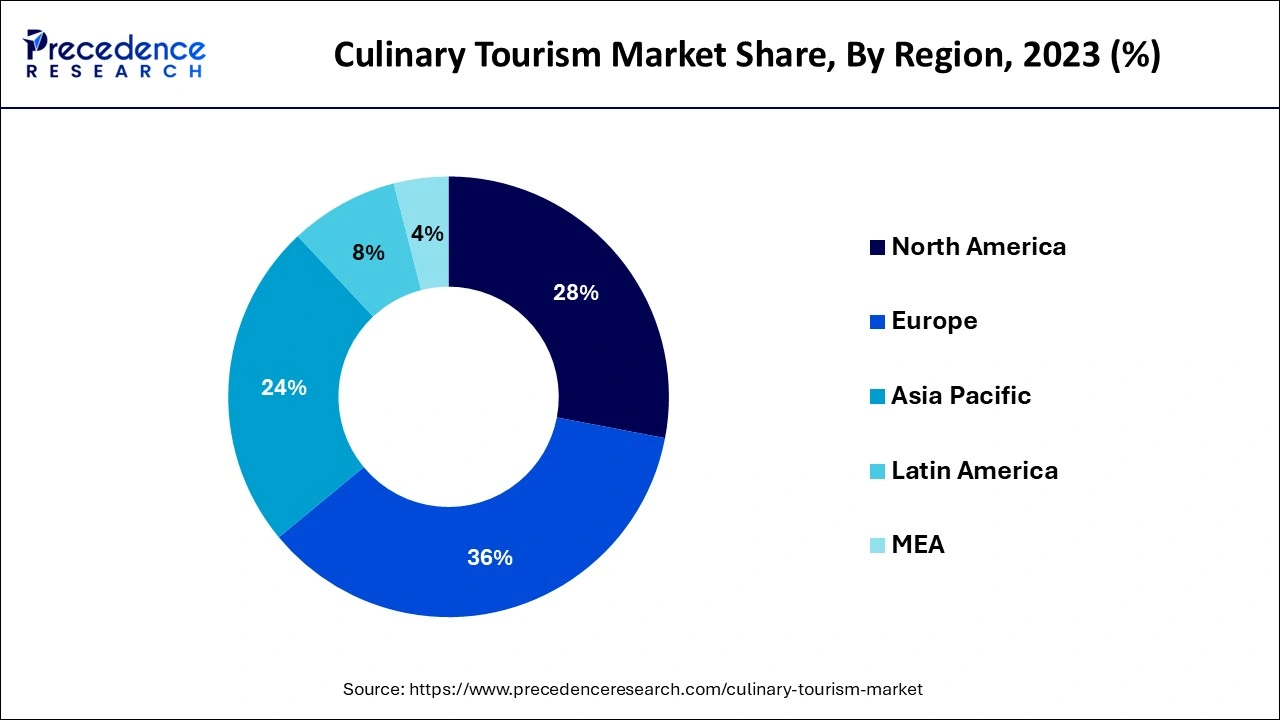
Asia Pacific is expected to show the fastest growth in the culinary tourism market during the forecast period. The growth of the market is attributed to the higher presence of the diverse cultural heritage in regional countries such as India, Thailand, Vietnam, Bali, Japan, and China. Regional countries have a number of local and authentic foods that attract foreign tourists, enhancing culinary tourism. Countries like Thailand, Bali, India, and others have world-class cuisines and support government policies for the expansion of tourism.
Culinary tourism is also known as gastronomy or food tourism, and the term is used to explore food for travel purposes. The food is one of the major factors that is considered when choosing the travel destination. From the marketing perspective, it plays an important role in prompting travel locations. Culinary tourism helps in revitalizing preserved recipes, culture, cooking techniques, and food rituals all over the world.
| Report Coverage | Details |
| Market Size by 2034 | USD 85.04 Billion |
| Market Size in 2024 | USD 13.83 Billion |
| Market Size in 2025 | USD 16.58 Billion |
| Market Growth Rate from 2024 to 2034 | CAGR of 19.92% |
| Largest Market | Europe |
| Base Year | 2023 |
| Forecast Period | 2024 to 2034 |
| Segments Covered | Activity, Booking Mode, Tourist Type, and Regions |
| Regions Covered | North America, Europe, Asia-Pacific, Latin America and Middle East, and Africa |
Expanding tourism industry
The rising economic growth in the different countries, disposable income in the population, and the continuous rise in population are contributing to the expansion of the culinary tourism market. The population has a rising preference for food and exploring the local culture, food, and heritage of different countries. The surging investment in lifestyle upgradation, tourism, and food by the population and the availability of diverse cultures in food and travel destinations.
Poor management skills
Poor management skills lead to excessive food wastage and poor working conditions. The increased cost and management time are also limiting the expansion of the culinary tourism market.
The technological advancements in culinary tourism
The growing number of food-focusing apps and agencies are driving the opportunities in the culinary tourism market. Applications such as OpenTable, TripAdvisor, LocalEats, Yelp, and FoodSpotting help in providing detailed information about restaurants, local food or cuisines, and food tours. Additionally, the rising investments in the research and development program on the integration of technologies into culinary tourism are driving the market expansion.
The food festival segment dominated the culinary tourism market in 2023. Food festivals play an important role in promoting culinary tourism in any country. There are several food festivals organized by the regional governments of countries that attract tourists from around the world to explore the local delicacies. Foreign investors help enhance local businesses and expect to generate significant revenue. Food festivals celebrate local cuisine and focus on the local and diverse availability of the food, culture, and tradition associated with the food. Furthermore, the food festivals help enhance local food engagement, increase community engagement, enhance culinary development, and so on.
The culinary trails segment is expected to show the fastest growth in the culinary tourism market during the forecast period. The culinary trails are events that are organized to celebrate the regional food in different locations. It mainly focuses on the regional, ethnic, and local culinary heritage. The culinary trails promote local cuisine or food, help increase rural tourism and employment, and promote social engagement.
Booking culinary tourism packages through the direct travel segment led the culinary tourism market in 2023. The increasing adoption of direct travel booking for culinary tourism is more efficient and cost-effective than other types of booking mediums. Direct travel provides efficient deals in the booking of hotels, flights, and car rentals. There are several leading travel and hospitality providers working on different travel packages with more personalized requirements and costs.
The culinary tourism packages booked through online travel agencies segment will witness the fastest growth in the culinary tourism market during the predicted period. Online travel agencies are one of the significant developments in the travel and tourism industry. Online travel packages are a one-stop solution for booking flights, hotels, cabs, and other travel facilities in a more precise and accurate way. Online travel agencies have several benefits for customers, including plenty of choices in the packages with different price ranges and providing user convenience as compared to offline or direct travel agencies.
The existential tourist type segment accounted for the largest share of the culinary tourism market in 2023. The existential tourist type seeks to find local food and aims to eat in localized places where the local people eat. Existential tourists are not the regular type of tourists seeking gourmet and Westernized food; they prefer the local and authentic food and culture of the region. Existential tourists are mostly attracted to food festivals, vineyard tours, cooking classes, schools, fishing trips, and other types of local activities.
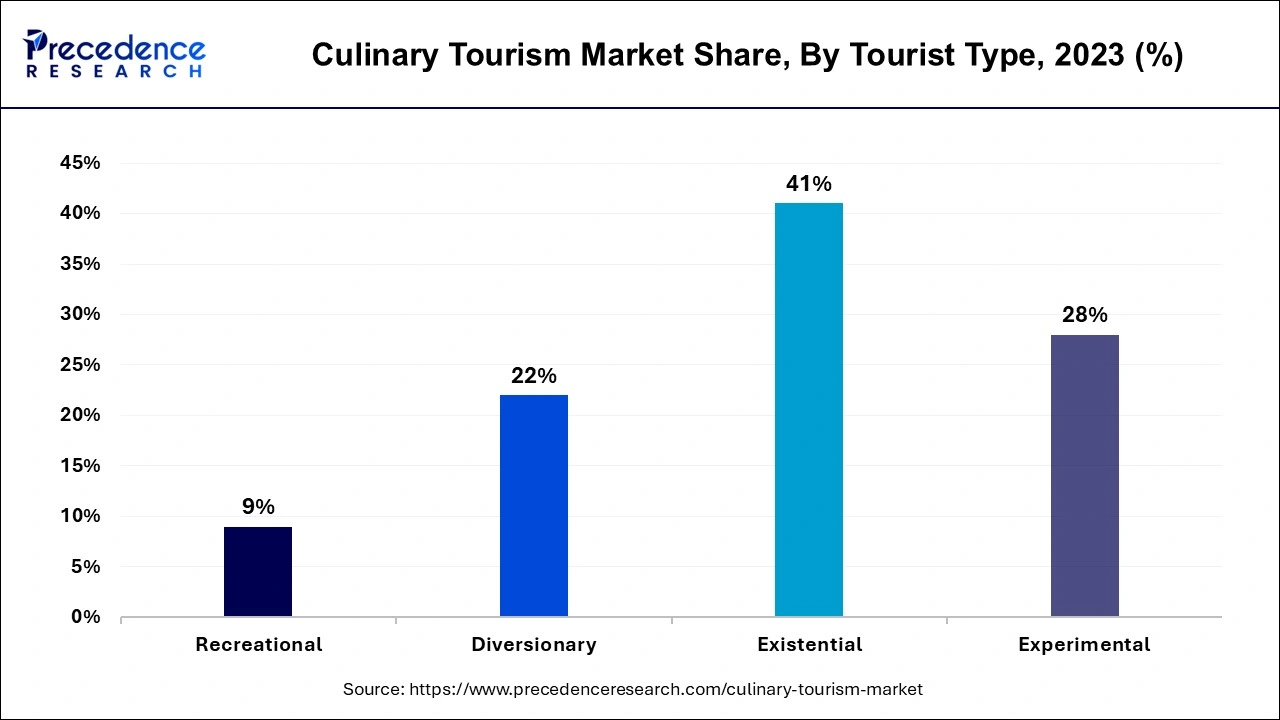
The diversionary segment is expected to show the fastest growth in the culinary tourism market during the forecast period. Diversionary tourists are the type of tourists who are actually concerned about their travel settings. They need prompt settings in every field or subject of tourism. The diversionary tourists invest their time, money, and efforts to find the top 10 places on the list.
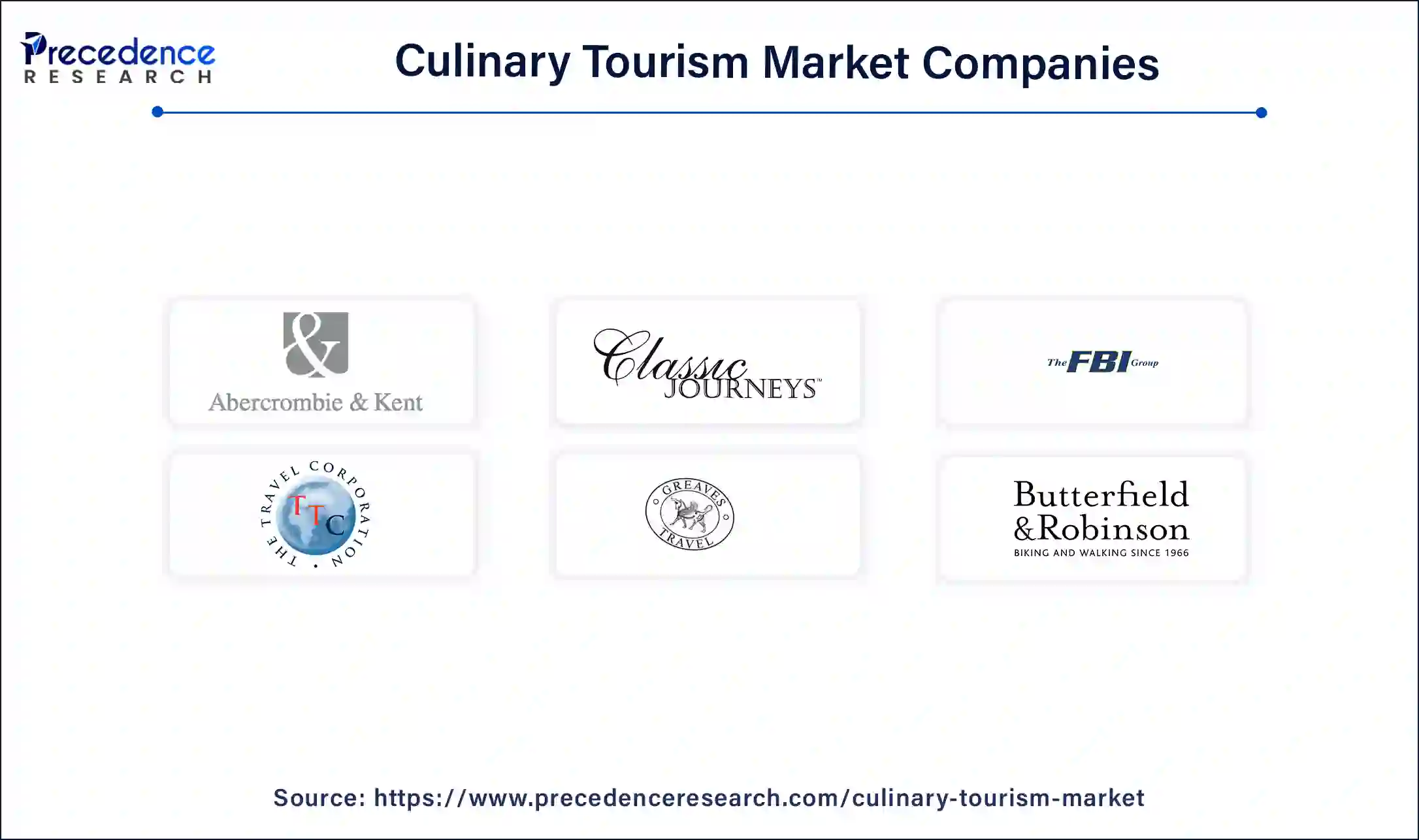
By Activity
By Booking Mode
By Tourist Type
By Geography
For inquiries regarding discounts, bulk purchases, or customization requests, please contact us at sales@precedenceresearch.com
No cookie-cutter, only authentic analysis – take the 1st step to become a Precedence Research client